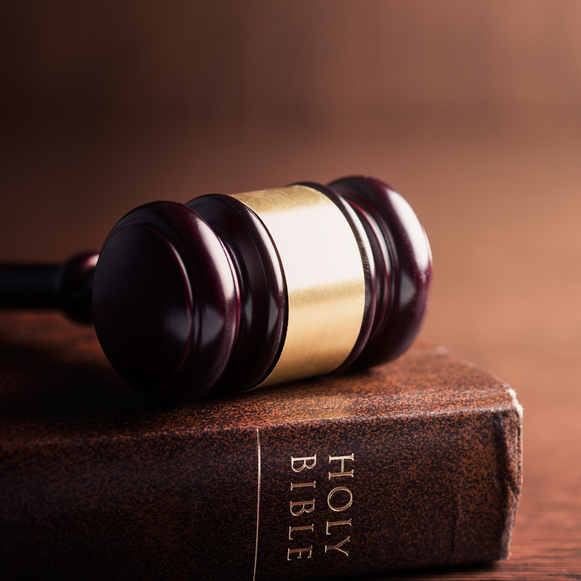With Barrett in majority, Supreme Court lifts COVID-19 restrictions on religious services

Image from Shutterstock.com.
In a 5-4 ruling Wednesday, the U.S. Supreme Court blocked two COVID-19 caps on attendance at religious services in New York.
Justice Amy Coney Barrett was in the majority, while Chief Justice John G. Roberts Jr. joined the court’s three liberal justices in the dissent, report SCOTUSblog, the New York Times and the Washington Post.
Before Barrett joined the court, Roberts had joined with the liberal justices, including Justice Ruth Bader Ginsburg before her death, to allow restrictions on religious services in California and Nevada.
The New York restrictions had limited worship services to 10 people in “red” zones where the virus risk was highest. The cap was 25 people in “orange” zones, the next highest level. But essential businesses not subject to strict limits included hardware stores, acupuncturists, camp grounds, garages, chemical plants, transportation facilities, liquor stores and bicycle repair shops.
The decision last week enjoined enforcement of the 10- and 25-person restrictions while the case continues in the 2nd U.S. Circuit Court of Appeals at New York. The plaintiffs have shown that they are likely to prevail on their First Amendment free exercise claim, the Supreme Court said in its per curiam opinion.
The court ruled even though the religious groups challenging the restrictions were in areas that were later downgraded to “yellow” zones, meaning that they could host services at 50% of maximum occupancy. The court said the issue isn’t moot because the status could again change.
Courts should no longer follow Roberts’ deference to state restrictions, Justice Neil M. Gorsuch wrote in a separate concurring opinion.
“Even if the Constitution has taken a holiday during this pandemic, it cannot become a sabbatical,” Gorsuch wrote. “Courts must resume applying the free exercise clause.”
“It is time—past time,” Gorsuch wrote, “to make plain that, while the pandemic poses many grave challenges, there is no world in which the Constitution tolerates color-coded executive edicts that reopen liquor stores and bike shops but shutter churches, synagogues and mosques.”
The Supreme Court’s majority opinion was a per curiam opinion. Five justices wrote separate opinions, including Roberts.
Roberts said there was no longer a need to issue an injunction because the affected houses of worship are now in yellow zones. While the 10- and 25-person caps “do seem unduly restrictive,” it is not necessary “to rule on that serious and difficult question at this time,” Roberts said.
“The governor might reinstate the restrictions. But he also might not. And it is a significant matter to override determinations made by public health officials concerning what is necessary for public safety in the midst of a deadly pandemic.”
The New York Times called the decision “almost certainly a taste of things to come.” It pointed out that, while Ginsburg was alive, Roberts joined the liberal justices to strike down a restrictive Louisiana abortion law, block a rollback on protections for immigrants who came to the country illegally as children, block a citizenship question on the census, and uphold the Affordable Care Act.
“Had Justice Barrett rather than Justice Ginsburg been on the court when those cases were decided,” the New York Times wrote, “the results might well have flipped.”
The New York case is Roman Catholic Diocese of Brooklyn v. Cuomo. The opinion also addressed issues in a second case, Agudath Israel of America v. Cuomo.



